The Chartres Labyrint – A Labyrinth Pattern from the Middle Ages
The Chartres labyrinth is, as with the Trojaborg labyrinth, a so-called unicursal labyrint. This means that when you have reached the goal in the centre, you have been through all the paths. There are no dead ends. You are led all the way in and out, so to speak. The pattern is harmonious, it is one continuous pathway.
The Chartres labyrinth is an old pattern that derives from the Middle Ages. In the city of Chartres in France (just southwest of Paris), you can still see this pattern today in the pavement of the old cathedral.
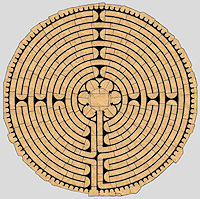
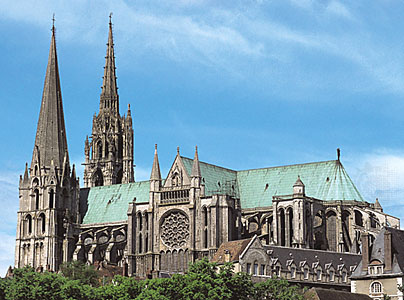
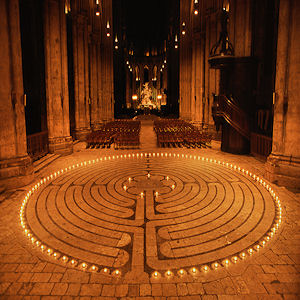
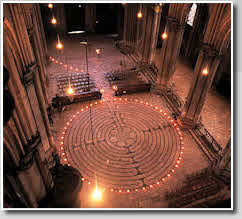
There are several French cathedrals that have labyrinths of various kinds. The labyrinth in the pavement in Chartres is probably the most well-known, and at the same time it is also the largest still existing church labyrinth.
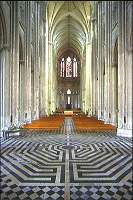
St Quentien cathedral in France
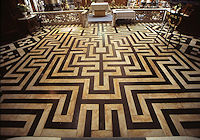
St. Omer cathedral in France
You can form a clear picture of how it was used, when you put the records together from various French cathedrals that either had had, or still have labyrinths.
In these cathedrals, the clergy danced on the labyrinth at the Easter Sunday devotion, together with the canons and chaplains. It was a kind of Easter dance to express the joy of life defeating death. At the beginning of the dance, the youngest canon handed over a large ball to the dean or the canon. The ball was so big that he couldn’t hold it in one hand. The clergy then danced solemnly in a triple rhythm (Tripudium) through the labyrinth paths, while the bishop threw the ball back and forth, higher and higher; clearly visualising the higher rising sun at spring time. The dancers formed a long chain and sang the old Easter hymn, ”Victimae Paschali Laudes” (Praises to the Easter Victim), accompanied by the organ.
In later centuries, it is recorded that pilgrims would traverse the labyrinth on their knees whilst reciting prayers. This kind of pilgrimage could last a full hour or more.
Se andre aktiviteter og oplevelser her:![]()
Opdag Jylland
Labyrinthia, Gl. Ryvej 2, Rodelund, DK-8653 Them
Telefon: (+45) 86 84 99 44 – Email: labyrinthia@labyrinthia.dk
CVR: 30 51 06 82
Design by Oskar Sjølander